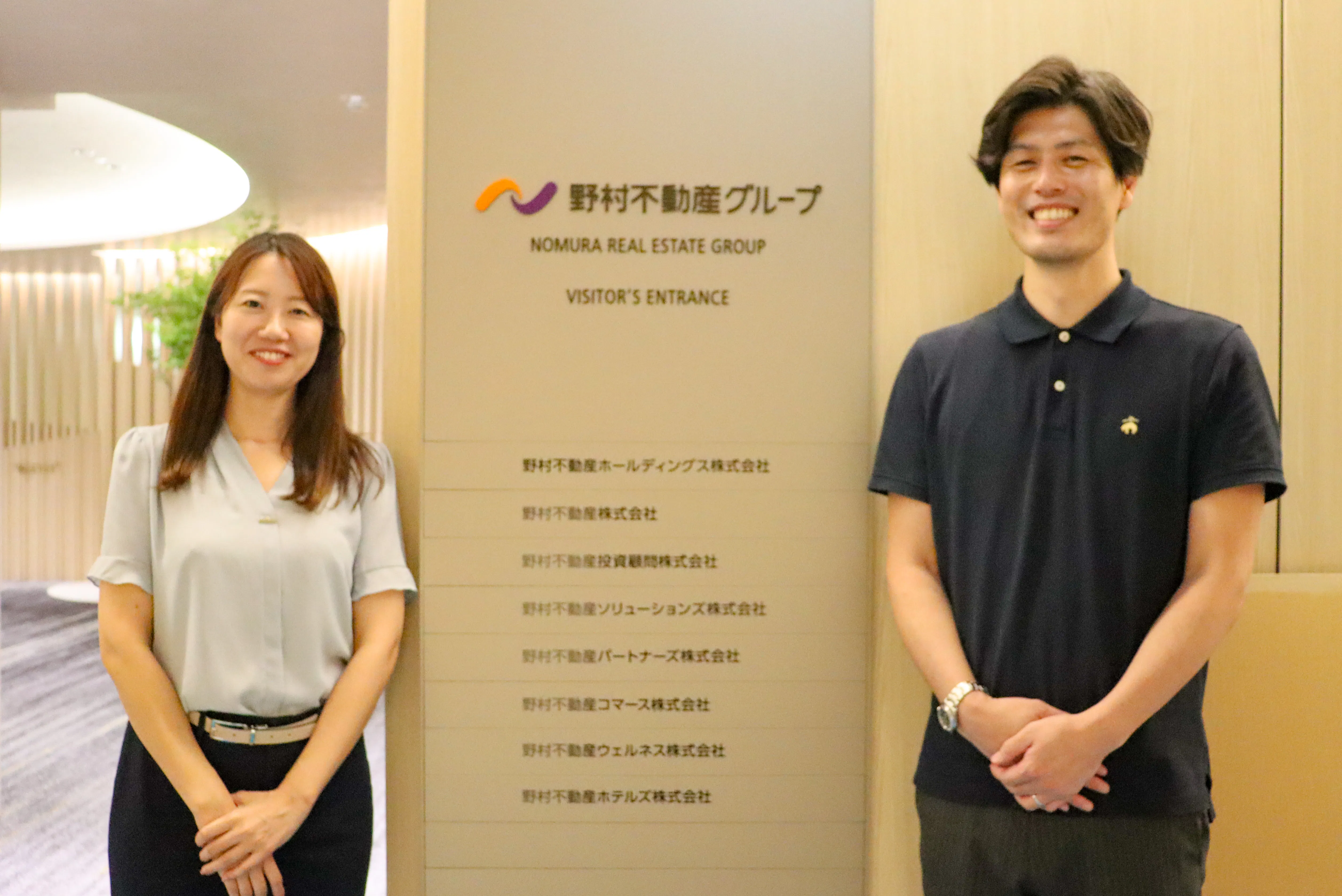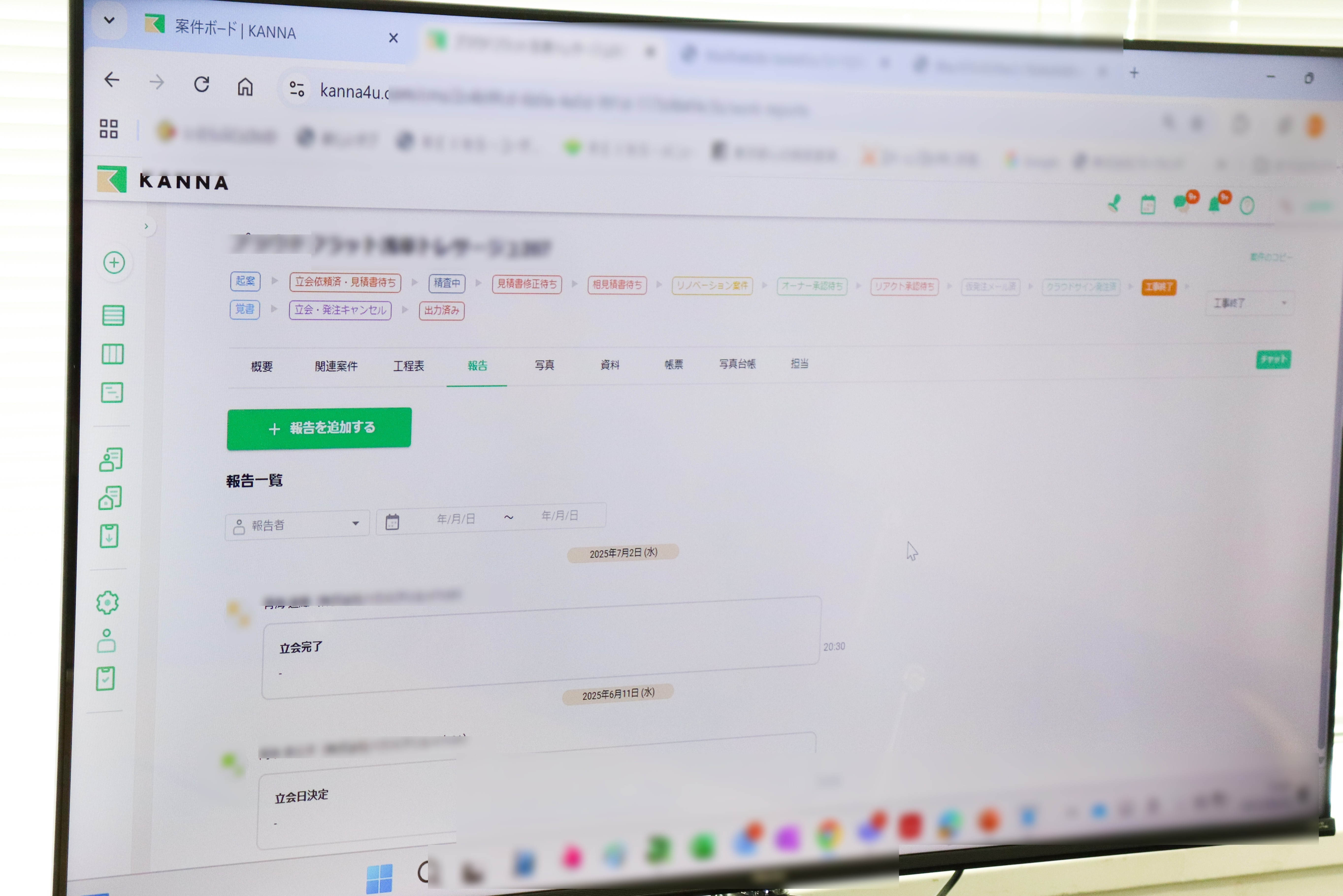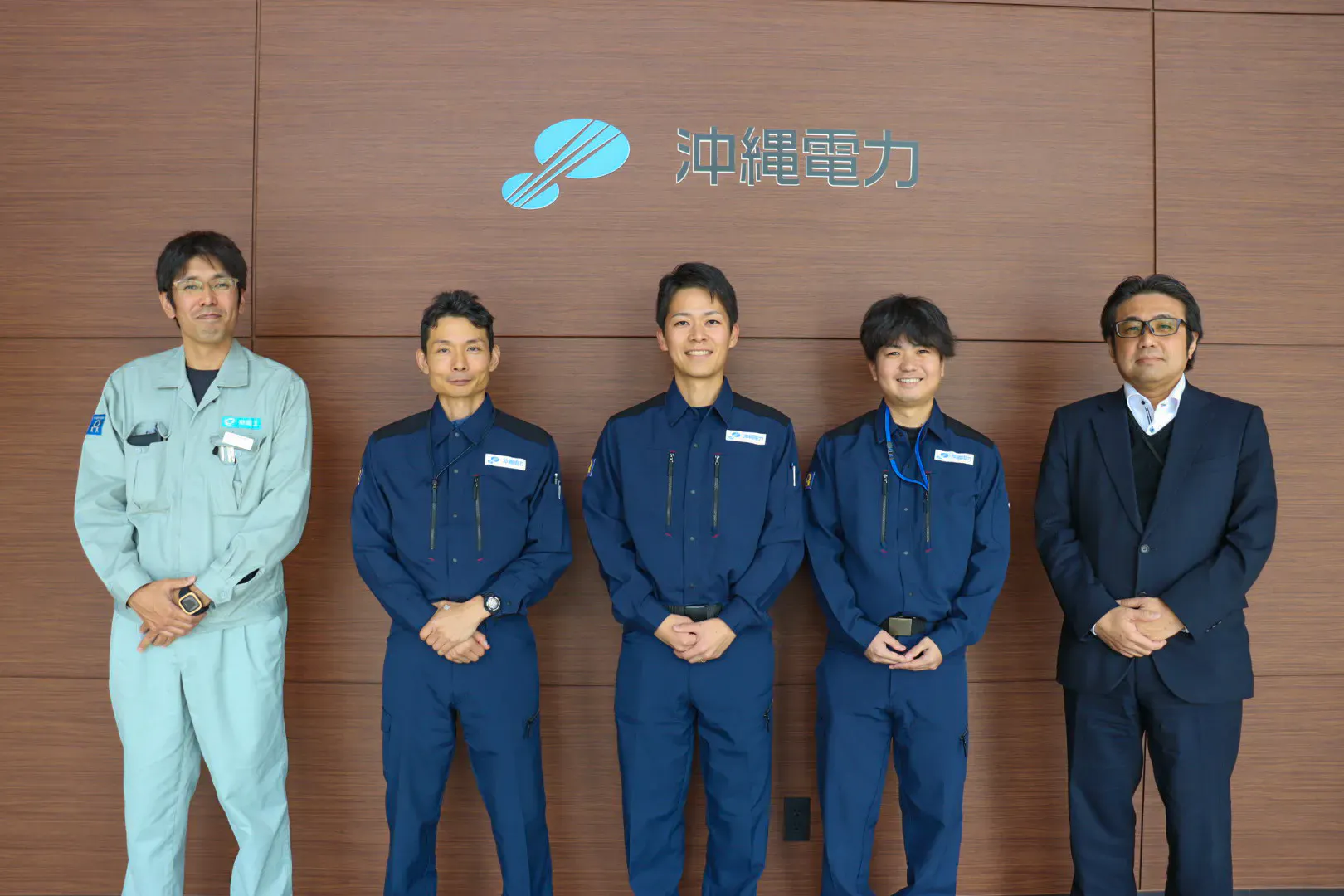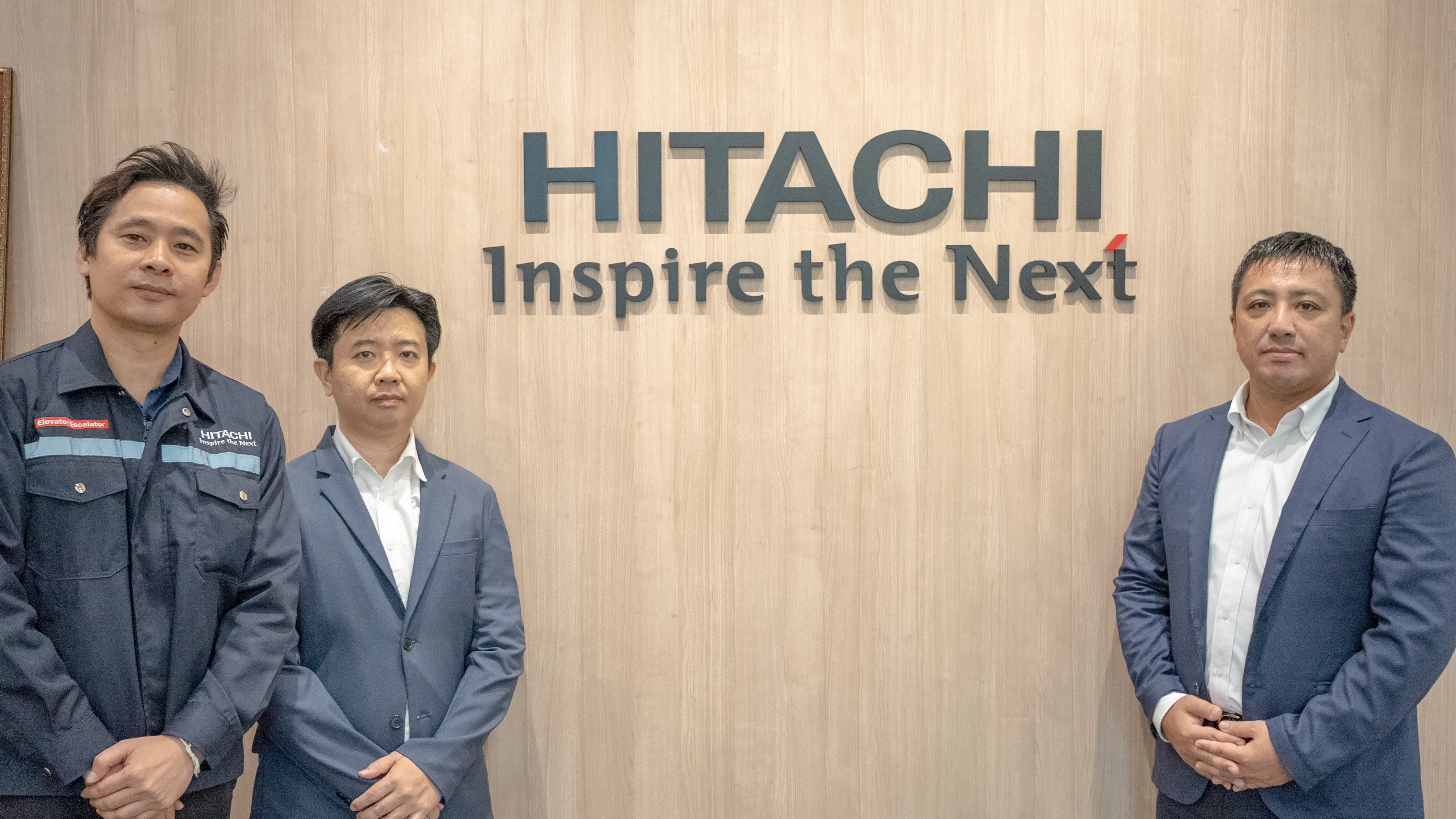Clear Communication, Faster Progress: Streamlining Condo Restoration with Partners


Company Name
Nomura Real Estate Partners Co., Ltd.
Number of Employees
6997 (as of September 1, 2025)
Business Activities
Facility management, condominium management, data center management, architectural and interior construction, property management, cleaning services, insurance agency operations, and renovation.
Utilization Services
Nomura Real Estate Partners Co., Ltd., known for managing high-quality residences such as the PROUD brand, as well as some of Japan’s leading office buildings and logistics facilities, oversees a wide range of properties across the country. As a professional group of building management experts, the company is dedicated to delivering the highest level of satisfaction to both owners and tenants. However, within a small but highly skilled team responsible for managing condominium restoration projects, serious challenges around information sharing had emerged. Reliance on analog tools like Excel and email created inefficiencies and placed a heavy burden on the team.
Why did the company decide to take a step toward digital transformation (DX)? And how did the adoption of KANNA transform the team’s way of working and their collaboration with partner companies? We spoke with Mr. Shunsuke Yamazato, Section Manager, and Ms. Yuko Misumi, Senior Staff Member of the Housing Business Division II Management Section, who led the implementation, about the reasons behind their choice, the impact since introduction, and their future outlook.
Background and Effects of KANNA Implementation
課題
- Fragmented information sharing: Reliance on both Excel and email created confusion. Because Excel couldn’t be edited and sent immediately, work was often delayed.
- Stressful information retrieval: Complex Excel files and large volumes of emails buried important details, making searches time-consuming.
- Inefficient communication: Low-resolution photos led to misunderstandings about problem areas, creating extra work for retakes and further clarification.
導入の決め手
- Intuitive UI: A simple design that requires no specialized knowledge, allowing anyone to use it intuitively.
- Centralized information management: By treating “one unit = one project”, all information is consolidated in the cloud, enabling simultaneous editing and viewing by both internal and external stakeholders.
- Low adoption barrier: Since some partner companies were already using KANNA, the training and onboarding costs were considered minimal.
効果・改善
- Instant information access: Simply enter the apartment name and room number in the search bar to immediately retrieve the necessary information.
- Drastic reduction in phone inquiries: With information updates and checks available anytime, anywhere, confirmation calls are no longer needed.
- No need for retakes: High-resolution photos can be shared by partner companies without worrying about file size limits.
Person interviewed

Nomura Real Estate Partners Co., Ltd.
Property Management Division, Housing Business Department II
Mr. Shunsuke Yamazato: Management Section Manager
Ms. Yuko Misumi: Management Section, Senior Staff
The Building Management Experts Struggling with Information-Sharing Issues
— Could you tell us about the business of Nomura Real Estate Partners Co., Ltd.?
Mr. Yamazato: As a member of the Nomura Real Estate Holdings Group, we handle the overall operation and management of buildings. One of our group’s core strengths lies in what we call an “integrated model of development, sales, and management.” Each company in the group works closely together, delivering a seamless service that spans from the construction and sales of properties to their long-term management.
Within that framework, our company is responsible for management, and our scope of work is very broad. We provide facility and property management for office buildings and commercial facilities, as well as condominium and public facility management. Our portfolio also extends to critical social infrastructure such as data centers. In addition, we cover a wide range of related services, including construction projects, equipment installation, site supervision, and renovations.

Among these, Ms. Misumi and I belong to the residential division within the property management business. Compared with companies that specialize solely in property management, our business scale may appear smaller. However, by leveraging our expertise as a team of building management professionals, we have established an integrated framework that covers everything—from operations and facility management to rental management.
Excel was read-only, emails got buried: the limits of analog management
— What challenges led you to introduce KANNA into the residential division?
Mr. Yamazato: We mainly manage rental apartments from the Nomura Real Estate Group’s PROUD FLAT and Prime Urban series. When a tenant moves out, restoration work is essential before welcoming the next resident. However, we faced challenges in coordinating with our partner contractors and sales staff, who actually carry out the work. We struggled to smoothly share information such as which unit had been vacated, when the restoration work would take place, when it would be completed, and when leasing could begin.

Ms. Misumi: Before introducing KANNA, we managed the entire process—from move-out to new tenant move-in—using Excel. But whenever someone in the company had the file open, it became “read-only,” preventing updates. Even if I waited and reopened it later, I would often get pulled into other tasks, leading to delays or omissions in updating information.
Another challenge was visibility. In addition to move-out dates and construction schedules, we had to keep track of details like auto-lock numbers and the names of the partner contractors in charge. The more data we added, the more complex the Excel sheet became, making it time-consuming to find the information we needed.
While internal information was managed in Excel, communication with partner contractors was handled by phone or email. Emails, in particular, were a major pain point. Since it was customary to CC many people, important details often got buried in the flood of messages.
Most of our exchanges with contractors involved photos needed for estimates. Because email attachments had strict size limits, they had to bundle several photos into PDFs before sending them. However, the image quality was poor, and it was hard to check fine details. We often had to request retakes, saying things like, “Please send a close-up photo of this part so we can see it more clearly.”

Mr. Yamazato: Asking contractors to retake photos didn’t just place an extra burden on them—it also meant we had to wait, making the process inefficient for both sides. On top of that, only three of us are responsible for overseeing the restoration work for more than 200 apartment buildings. We need to manage progress while also sharing updates quickly with contractors, sales staff, and management. But relying on Excel and email had already reached its limit.
“We’re already using KANNA.” - Contractor feedback was a major push toward adoption
— Why did you ultimately choose KANNA as the tool for seamless information sharing?
Ms. Misumi: The biggest factor was its visibility. KANNA’s layout brings together the necessary functions in a compact, easy-to-understand way. The intuitive design makes it immediately clear where everything is. We actually looked into other management tools tailored for the construction industry, but we were concerned they might be too specialized and difficult to use. KANNA, on the other hand, is simple in both function and design. That gave us confidence that not only our internal team but also our contractors could adopt it easily.

We use KANNA by treating each apartment unit as a single project. All key details—such as basic information, estimates, documents, and photos—are organized by unit. This prevents mix-ups with other properties and makes it easy to find the information we need right away. Each project also allows us to invite the relevant stakeholders and even set certain details as confidential, which means we don’t need to separate tools for internal and external communication. Everything can be centrally managed.
Mr. Yamazato: Before implementation, we asked some of our partner contractors for their opinions, and a few of them told us, “We’re already using KANNA.” The effectiveness of an information-sharing tool depends on everyone being able to use it smoothly. Normally, it would take time and persistence to explain and onboard contractors, but if they’re already familiar with the platform, that makes things much easier. This was another strong factor that pushed us toward adoption. In fact, aside from our Property Management Division, our company’s Renovation Division has also introduced KANNA.
Boosted Efficiency, Reduced Stress, Lighter Load for Contractors
— What changes have you seen since introducing KANNA?
Ms. Misumi: The biggest change has been the ability to update and access information exactly when we need it, without being affected by others’ schedules. Back when we managed everything in Excel, we constantly ran into “read-only” restrictions, wasting time waiting to edit. Searching for information meant struggling with complicated spreadsheets and countless emails. Now, all I need to do is enter the apartment name and unit number into KANNA’s search bar, and I’m there immediately.
On each project page, we can check everything at once—basic details, documents, and photos. By organizing information by unit, we no longer risk mixing up files. Estimates, in particular, used to be tricky because the format looked identical even when amounts changed, making it hard to identify the latest version. With KANNA, updated dates are displayed clearly, so there’s no confusion. As a result, order mistakes have decreased significantly.
Mr. Yamazato: Before KANNA, even small clarifications often led to phone calls directly to me or Misumi. Now that people can find the information themselves on KANNA, the number of calls has dropped dramatically. Every call forced us to stop what we were doing, and when they happened too frequently, it became stressful. That stress has now been lifted. The convenience of accessing the right information without hesitation benefits not only us, but everyone involved.
We’ve also reduced the burden on our contractors. As Misumi mentioned, they used to send us photos bundled into PDFs due to email size limits. Now, they can upload unlimited high-resolution images directly into folders like “Living Room,” “Bedroom,” or “Bathroom.” This makes it easier for them to share, and easier for us to review.

Thanks to contractors uploading a wide range of photos—from wide shots of the entire room to close-ups of equipment—there’s no longer any need to request retakes. For the contractors, the time previously spent selecting necessary photos and compiling them into PDFs has been completely eliminated. The efficiency gains brought by KANNA are clear.
Setting the Standard for Progress Management
— Finally, what are your future plans for using KANNA?
Mr. Yamazato: What does smooth progress management really look like? I believe KANNA has shown the company the “ideal form” of progress management. For years, we felt the limits of Excel and email management, but changing familiar workflows is never easy. By carefully explaining not only how to operate KANNA, but also what tasks would be eliminated and how work would become more efficient, we were able to achieve the operational improvements I’ve described.
In that sense, introducing KANNA in our department was the first step toward greater efficiency. Property management for apartments involves many different tasks, and so far, we’ve only digitized a portion of them. Because we can already see the benefits of KANNA, we plan to expand its use to manage maintenance work for occupied units, further strengthening collaboration and improving overall operational efficiency.
Article published on: October 2, 2025





